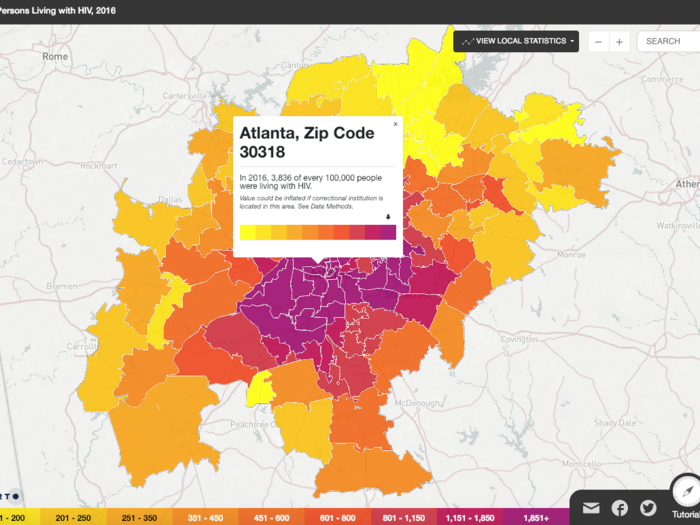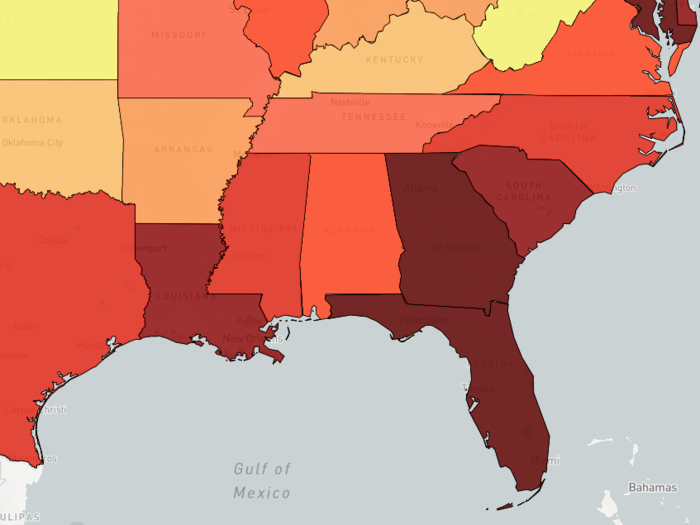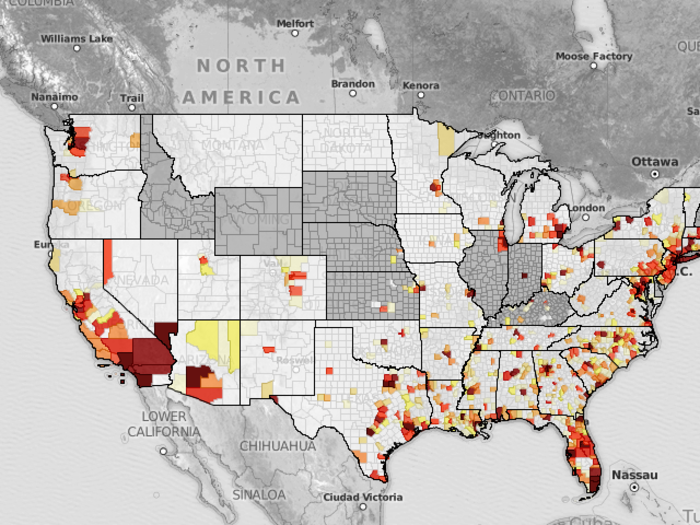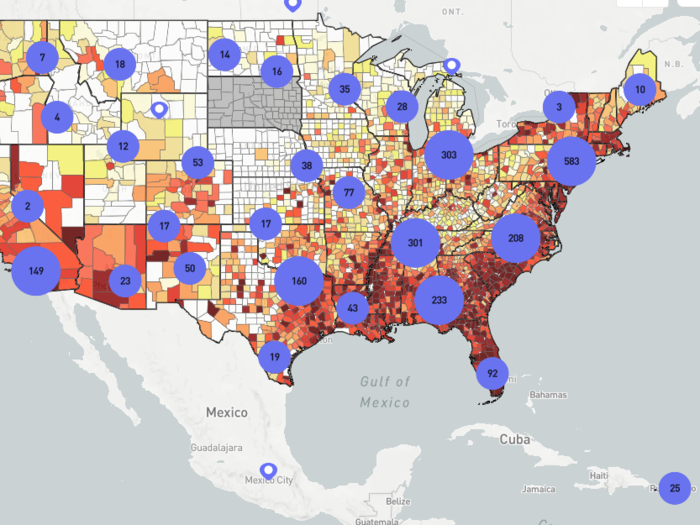Trump just promised to end the HIV epidemic. This map shows the areas of the US that are home to the most people living with the disease.
AIDSVu gets its data from state and city health departments that collect information on a local level. This map looks at the number of new HIV diagnoses, with darker purple denoting more diagnoses in a given county.
Popular Right Now
Popular Keywords
Advertisement




